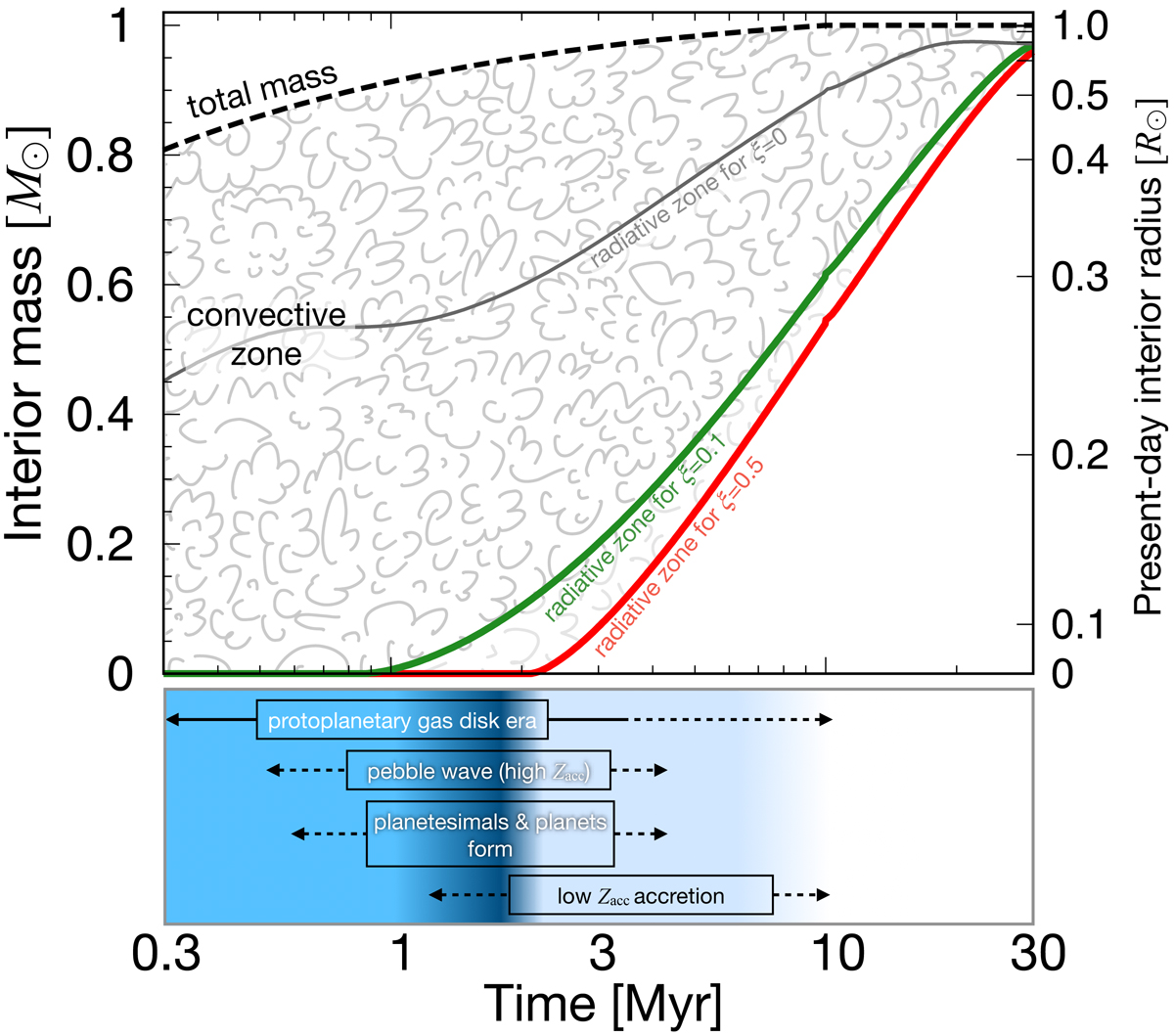Fig. 2.

Download original image
Early evolution of the solar interior. The total mass of the accreting proto-Sun is indicated by the dashed line. The surface CZ is depicted as a cloudy region (see Kippenhahn & Weigert 1990) delimited by a radiative zone that grows outward from the center of the Sun. Three evolution models are shown corresponding to different values of the accretion efficiency parameter ξ: a classical evolution model with ξ = 0.5 (red line), a cold accretion model with ξ = 0.1 (green line) that is a lower limit of the ξ value in the observations of young clusters (Kunitomo et al. 2017), and a model with ξ = 0 (gray line) corresponding to a theoretical proto-Sun formed in the absence of any accretion heat. The right-hand y-axis provides the radius corresponding to the mass on the left-hand y-axis of the present-day Sun (which is 4.567 Gyr old). Bottom panel: highlights the key physical processes that occur during the growth of the proto-Sun: the presence of a circumstellar gas disk (during the first million years); an increase in the metallicity Zacc of the accreted gas due to a pebble wave; the concomitant formation of planetesimals and planets; and a sudden decrease in Zacc.
Current usage metrics show cumulative count of Article Views (full-text article views including HTML views, PDF and ePub downloads, according to the available data) and Abstracts Views on Vision4Press platform.
Data correspond to usage on the plateform after 2015. The current usage metrics is available 48-96 hours after online publication and is updated daily on week days.
Initial download of the metrics may take a while.


